Mechanical Damage Assessment for Pneumatic Control Valves Based on a Statistical Reliability Model
Abstract
1. Introduction
2. Reliability Assessment and Its Components
2.1. Reliability Assessment
2.2. Bath Tub Curve
3. System Setup
3.1. Experimental Setup
3.2. Data Collection
3.3. Reliability Prediction
3.3.1. Weibull Distribution
3.3.2. Normal Distribution
3.3.3. Exponential Distribution
3.3.4. Lognormal Distribution
4. Simulation Results
5. Conclusions and Discussion
Author Contributions
Funding
Institutional Review Board Statement
Informed Consent Statement
Data Availability Statement
Acknowledgments
Conflicts of Interest
Abbreviations
| RAM | Reliability Availability and Maintainability |
| MTTF | Mean Time To Fail |
| TTF | Total Time to Fail |
| weib | Weibull Distribution |
| exp | Exponential Distribution |
| lognor | Log Normal Distribution |
| cdf | Cumulative Density Function |
| Probability Density Function | |
| f(t) | pdf of random variable |
| F(t) | cdf for a system |
| h(t) | Hazard Function |
| failure rate | |
| MLE | Maximum Likelihood Estimation |
| Std | Standard Error |
| CI | Confidence Intervals |
| Pr | Probability |
| nor | Normal |
| eta, Weibull scale parameter | |
| beta, Weibull distribution shape parameter | |
| sev | Survival, smallest extreme value distribution |
| ssev | indicates a standard smallest extreme value distribution |
| cdf for a standardized location-scale distribution | |
| pdf for a standardized location-scale distribution | |
| sigma, scale parameter for a location-scale distribution | |
| mu, location parameter of a location-scale distribution | |
| gamma, threshold parameter of the distribution function of T | |
| y | unrestricted random variable or a dummy variable |
| z | standard random variable |
References
- Morcos, M. Assessing systems reliability: A Probabilistic Risk Assessment (PRA) approach. In Proceedings of the 18th AR2TS, Advances in Risk and Reliability Technology Symposium, Loughborough, UK, 21–23 April 2009. [Google Scholar]
- Dhananjay, K.; Klefsjo, B.; Kumar, U. Reliability analysis of power transmission cables of electric mine loaders using the proportional hazards model. Reliab. Eng. Syst. Saf. 1992, 37, 217–222. [Google Scholar]
- Warburton, D.; Strutt, J.E.; Allsopp, K. Reliability prediction procedures for mechanical components at the design stage. Proc. Inst. Mech. Eng. Part E J. Process. Mech. Eng. 1998, 212, 213–224. [Google Scholar] [CrossRef]
- Fei, H.; Bifeng, S.; Tianxiang, Y.; Weimin, C. Present State and Prospects for Valve Reliability Technique Study. J. Mach. Tool Hydraul. 2008, 9, 48. [Google Scholar]
- Desborough, L.; Miller, R. Increasing customer value of industrial control performance monitoring-Honeywell’s experience. In AIChE Symposium Series; No. 326; American Institute of Chemical Engineers: New York, NY, USA, 1998; pp. 169–189. [Google Scholar]
- Shinskey, F.G. Putting controllers to the test. Chem. Eng. 1990, 97, 96. [Google Scholar]
- Martin, G.D.; Turpin, L.E.; Cline, R.P. Estimating control function benefits. Hydrocarb. Process. (Int. Ed.) 1991, 70, 68–73. [Google Scholar]
- Miao, T.; Seborg, D.E. Automatic detection of excessively oscillatory feedback control loops. In Proceedings of the 1999 IEEE International Conference on Control Applications (Cat. No. 99CH36328), Kohala Coast, HI, USA, 22–27 August 1999; Volume 1, pp. 359–364. [Google Scholar]
- Ruel, M. Stiction: The hidden menace. Control Mag. 2000, 13, 69–75. [Google Scholar]
- Mathur, N.; Asirvadam, V.S.; Aziz, A.A.; Ibrahim, R. Control Valve Life Cycle Prediction and Effect of Valve Stiction in Reliability Analysis. In Proceedings of the 16th IEEE International Colloquium on Signal Processing & Its Applications (CSPA), Langkawi, Malaysia, 28–29 February 2020; pp. 46–51. [Google Scholar]
- Yang, J.W.; Wang, J.H.; Huang, Q.; Zhou, M. Reliability assessment for the solenoid valve of a high-speed train braking system under small sample size. Chin. J. Mech. Eng. 2018, 31, 47. [Google Scholar] [CrossRef]
- Zhu, T. Reliability estimation for two-parameter Weibull distribution under block censoring. Reliab. Eng. Syst. Saf. 2020, 203, 107071. [Google Scholar] [CrossRef]
- Gabriska, D. Evaluation of the Level of Reliability in Hazardous Technological Processes. Appl. Sci. 2021, 11, 134. [Google Scholar] [CrossRef]
- Choudhury, M.S.; Thornhill, N.F.; Shah, S.L. Modelling valve stiction. Control Eng. Pract. 2005, 13, 641–658. [Google Scholar] [CrossRef]
- Choudhury, M.S.; Jain, M.; Shah, S.L. Stiction–definition, modelling, detection and quantification. J. Process Control 2008, 18, 232–243. [Google Scholar] [CrossRef]
- Meeker, W.Q.; Escobar, L.A. Escobar. Statistical Methods for Reliability Data; John Wiley & Sons: Hoboken, NJ, USA, 2014. [Google Scholar]
- Andrews, J.D.; Moss, T.R. Reliability and Risk Assessment; Wiley-Blackwell: Hoboken, NJ, USA, 2002. [Google Scholar]
- Mathur, N.; Asirvadam, V.S.; Aziz, A.A.; Ibrahim, R. Visualizing and predicting reliability of control valves based on simulation. In Proceedings of the IEEE Conference on Systems, Process and Control (ICSPC), Melaka, Malaysia, 14–15 December 2018; pp. 54–59. [Google Scholar]

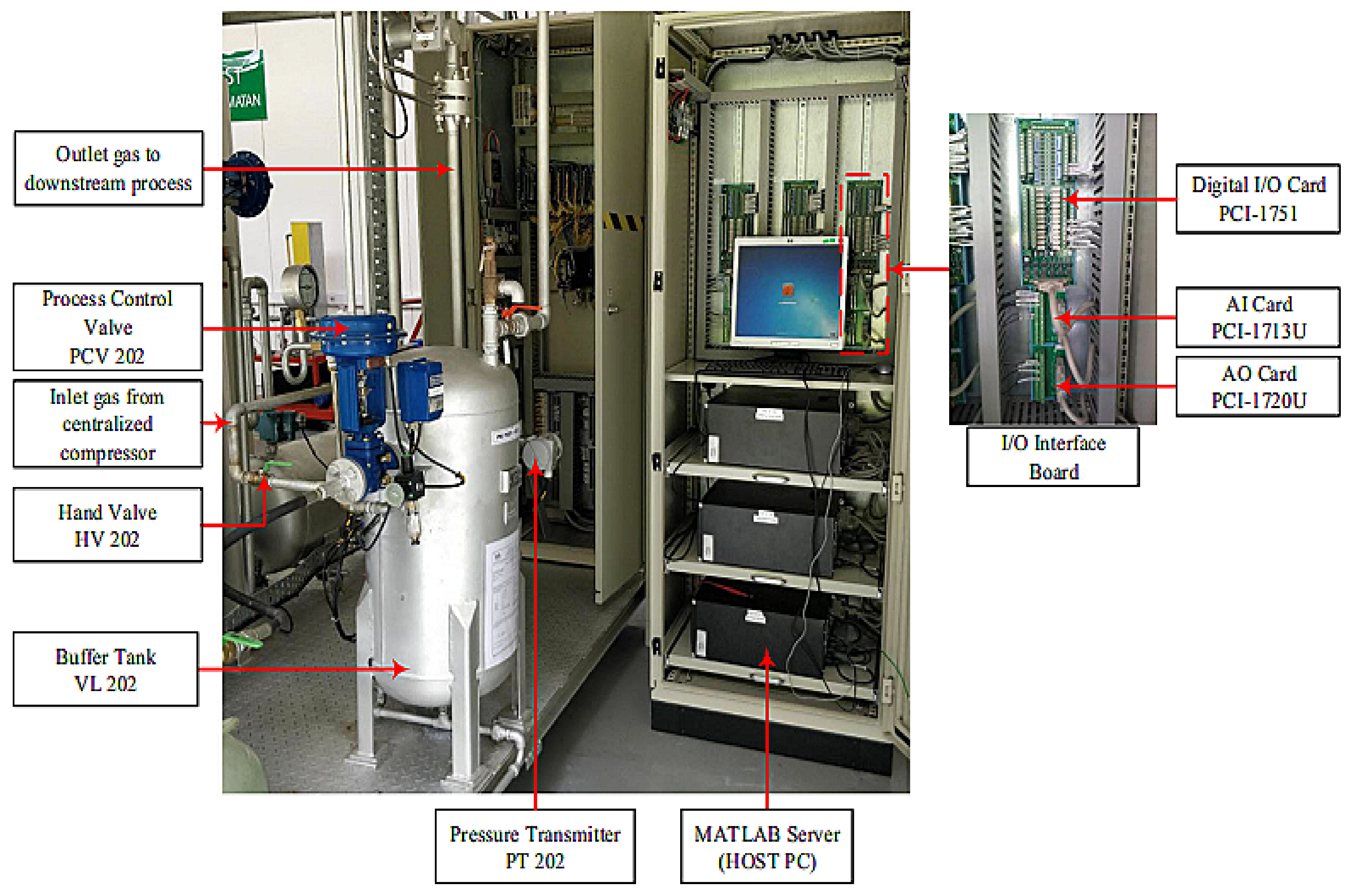
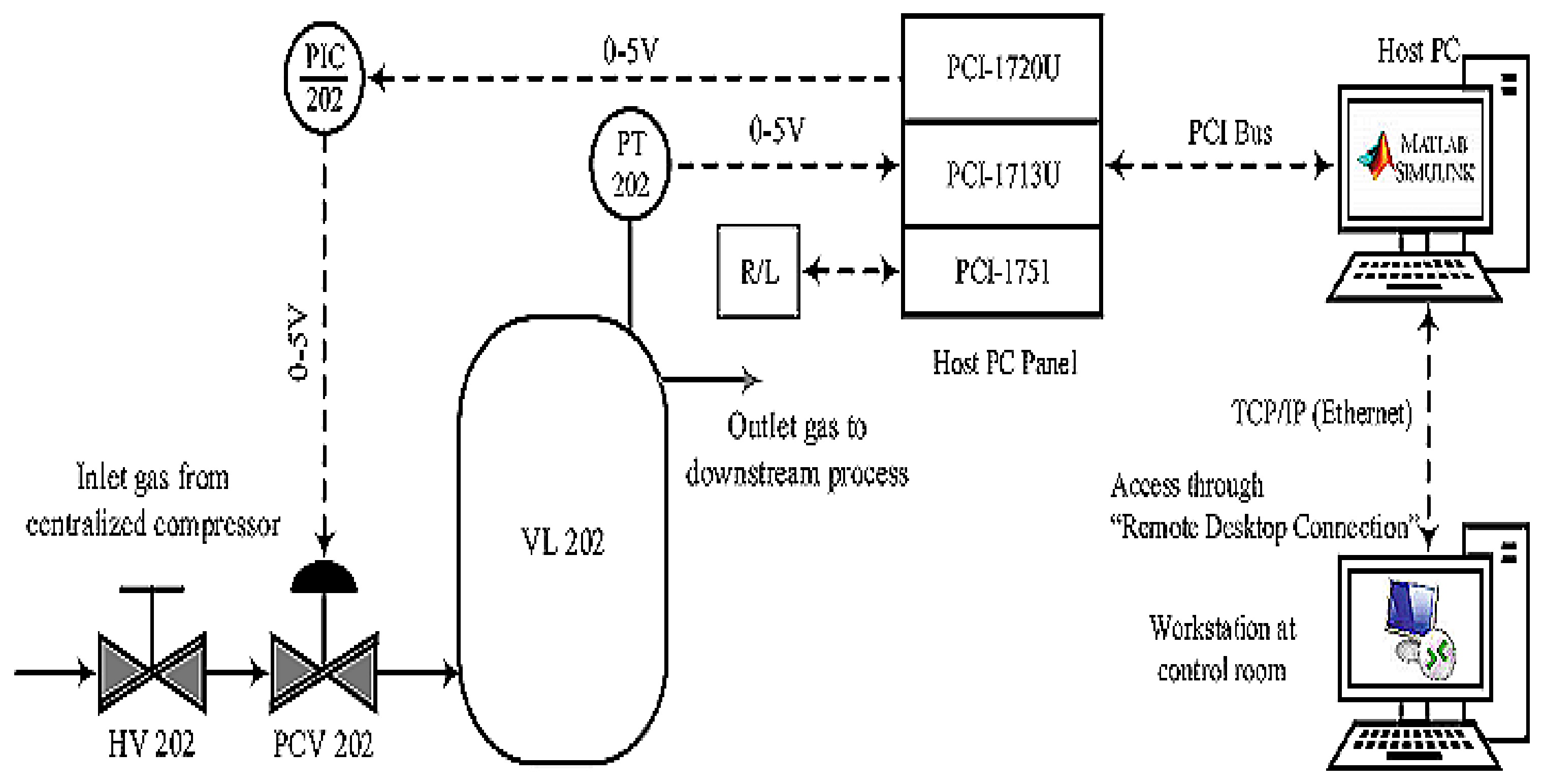
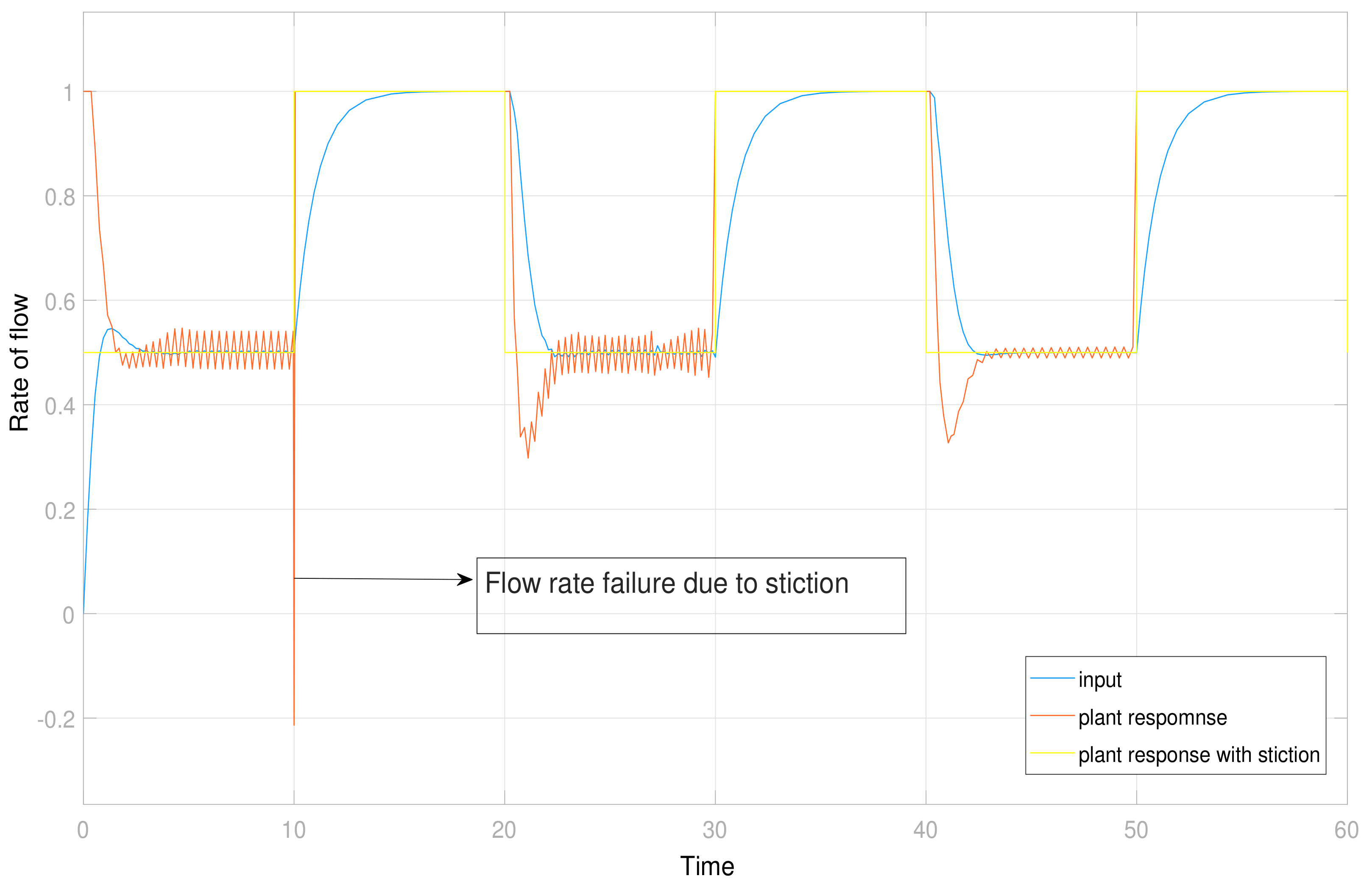
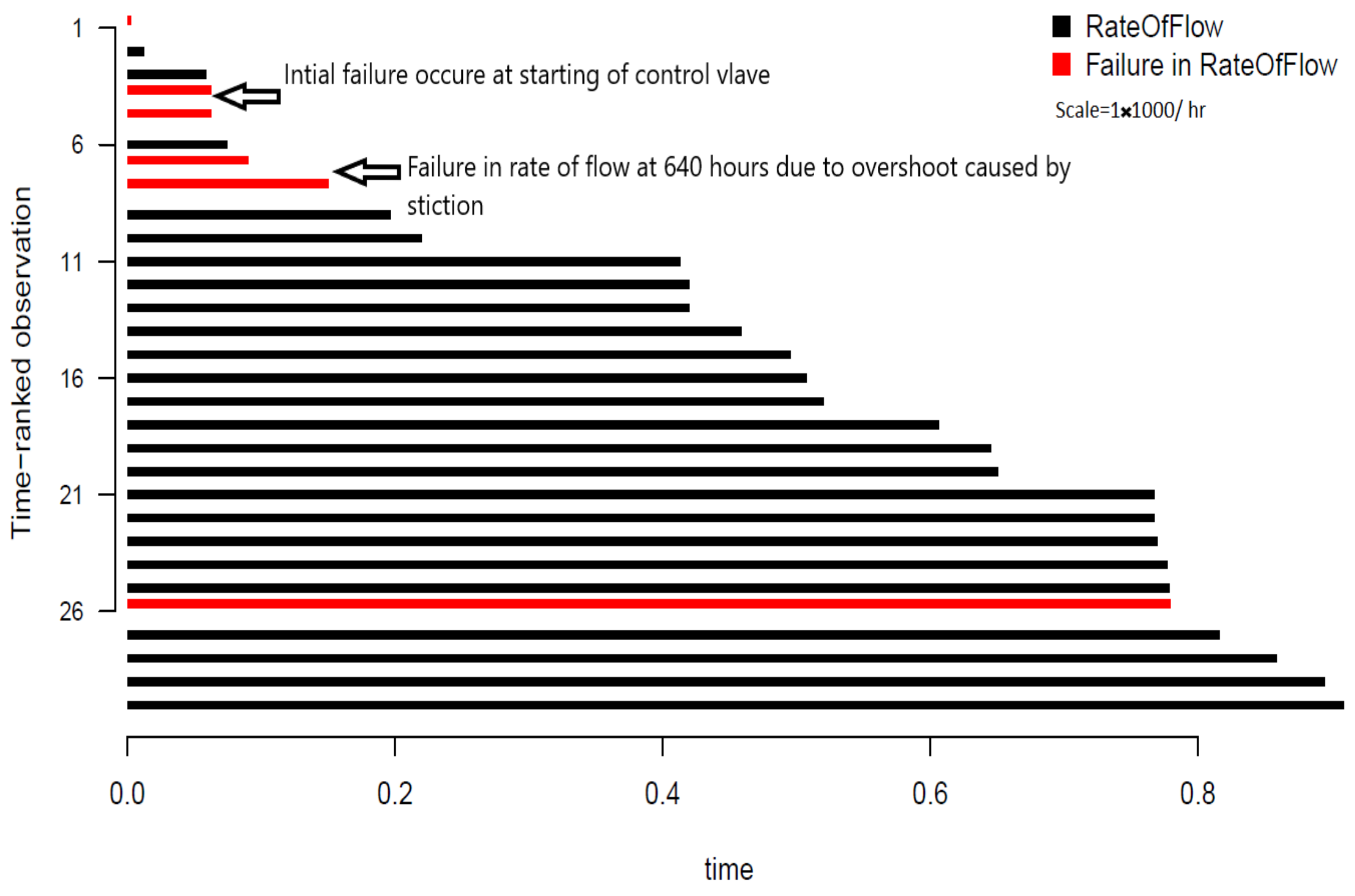
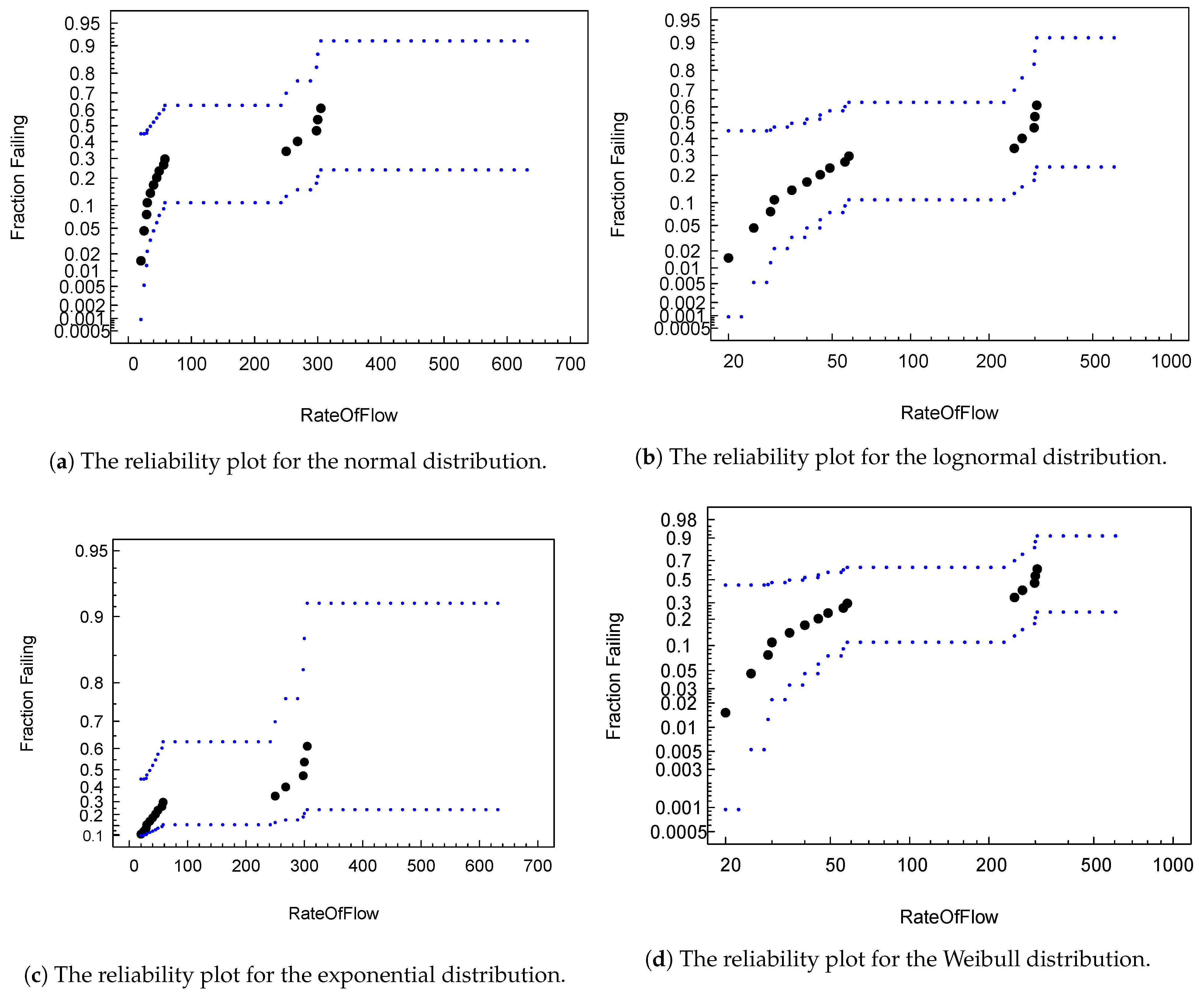
| Rate of Flow | Std. Error | MLE 95% CI | ||
|---|---|---|---|---|
| 95% Lower | 95% Upper | |||
| 20 | 0.04945167 | 0.03025560 | 0.01471353 | 0.1593042 |
| 50 | 0.10078031 | 0.04481346 | 0.04147054 | 0.2338855 |
| 100 | 0.16959199 | 0.05828572 | 0.08482773 | 0.3226762 |
| 200 | 0.27755249 | 0.07851267 | 0.08482773 | 0.3226762 |
| 500 | 0.49386968 | 0.13000931 | 0.27755502 | 0.7598024 |
| 1000 | 0.69617176 | 0.16954764 | 0.37852058 | 0.9493920 |
| Model | MTTF | Model 95% CI | |
|---|---|---|---|
| 95% Lower | 95% Upper | ||
| Weibull Distribution | 652.6 h | 106.5 | 4000 |
| Normal | 253.1 h | 132.3 | 373.9 |
| Lognormal | 8952.00 h | 115.5 | 694,103.00 |
| Exponential | 25,450.00 h | 9552 | 67,809.00 |
| Model Parameters | MLE | Stand Err | Model 95% CI | |
|---|---|---|---|---|
| 95% Lower | 95% Upper | |||
| Weibull | 6.6012 | 0.9328 | 4.773 | 8.4295 |
| Weibull | 0.4108 | 0.1584 | 0.193 | 0.8745 |
| Weibull | 736.0062 | 686.5469 | 118.272 | 4580.1809 |
| Weibull | 2.4341 | 0.9383 | 1.143 | 5.1814 |
| Normal | 253.12 | 61.64 | 132.30 | 373.9 |
| Normal | 66.14 | 21.80 | 34.66 | 126.2 |
| Lognormal | 8.097 | 1.4848 | 5.1867 | 11.007 |
| Lognormal | 1.416 | 0.5233 | 0.6864 | 2.922 |
| Exponential | 10.14 | 0.5 | 9.164 | 11.12 |
| Exponential | 1.00 | 0.0 | 1.000 | 1.00 |
Publisher’s Note: MDPI stays neutral with regard to jurisdictional claims in published maps and institutional affiliations. |
© 2021 by the authors. Licensee MDPI, Basel, Switzerland. This article is an open access article distributed under the terms and conditions of the Creative Commons Attribution (CC BY) license (https://creativecommons.org/licenses/by/4.0/).
Share and Cite
Mathur, N.; Asirvadam, V.S.; Aziz, A.A. Mechanical Damage Assessment for Pneumatic Control Valves Based on a Statistical Reliability Model. Sensors 2021, 21, 3307. https://doi.org/10.3390/s21103307
Mathur N, Asirvadam VS, Aziz AA. Mechanical Damage Assessment for Pneumatic Control Valves Based on a Statistical Reliability Model. Sensors. 2021; 21(10):3307. https://doi.org/10.3390/s21103307
Chicago/Turabian StyleMathur, Nirbhay, Vijanth Sagayan Asirvadam, and Azrina Abd Aziz. 2021. "Mechanical Damage Assessment for Pneumatic Control Valves Based on a Statistical Reliability Model" Sensors 21, no. 10: 3307. https://doi.org/10.3390/s21103307
APA StyleMathur, N., Asirvadam, V. S., & Aziz, A. A. (2021). Mechanical Damage Assessment for Pneumatic Control Valves Based on a Statistical Reliability Model. Sensors, 21(10), 3307. https://doi.org/10.3390/s21103307






